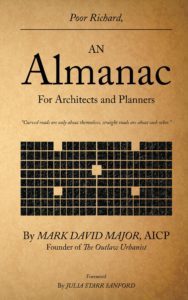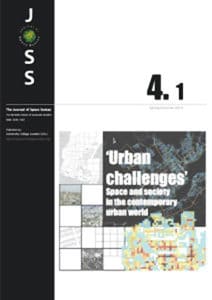To Be or Not to Be: The Splenda Housing Market
by Dr. Mark David Major, AICP, CNU-A, The Outlaw Urbanist contributor
UrbanLand reports we finally have a ‘real’ housing recovery (see below). Trulia Trends and The Atlantic Cities report housing prices are recovering at a more rapid pace in urban neighborhoods than in the suburbs (see below). However, CNN/Money and AOL Real Estate report McMansions of suburbia are making a comeback (see below) based on recent Census data instead of national homebuilder ‘wish fulfillment’ surveys (see The Outlaw Urbanist January 24, 2013 post, “McMansions Return“). Other media outlets are reporting an explosion in rental apartment construction. What gives?
Welcome to a Splenda Housing Market, where the modus operandi is a saccharine high of easy money, taxpayer-funded bailouts, and manipulated markets!
• The Fed continues to pump easy money into the economy at a rapid rate through its bond-purchasing program called Qualitative Easing (what number are we on now?).  Despite what Paul Krugman and the American government tell you (“we only measure inflation on things people don’t want to buy”), there are real inflationary pressures out there, which are transmitted into every facet of the American economy including housing. The evidence lies in the year-to-year increase in housing prices from 2011 to 2012. The appreciation of property values in the Trulia Trends report range from 7.3% in New York to an astounding 33.8% in Las Vegas! This is patently unsustainable and highly suspicious.
Despite what Paul Krugman and the American government tell you (“we only measure inflation on things people don’t want to buy”), there are real inflationary pressures out there, which are transmitted into every facet of the American economy including housing. The evidence lies in the year-to-year increase in housing prices from 2011 to 2012. The appreciation of property values in the Trulia Trends report range from 7.3% in New York to an astounding 33.8% in Las Vegas! This is patently unsustainable and highly suspicious.
• Eager to return to the “good, old days” as quickly as possible, realtors and landlords are shamelessly inflating prices for home/property and monthly rents to a level far above their real value, especially in light of the next item.
• The banks have a huge amount of inventory of foreclosed homes on their books, the majority of which lies vacant and withheld from the housing market. What does it mean? Housing prices never reached their true floor.
• For every home foreclosed, the banks not only get the home but also file an insurance claim on the mortgage debt, usually with AIG (i.e. the American {Insurance} Government). What does it mean? The banks get to have their cake courtesy of dispossessed homeowners and they get to eat it too funded by American taxpayers by double dipping on the value of the home and the mortgage.
• As home/property values continue to appreciate at a steady pace, the banks will systematically release their massive inventory onto the market to capitalize on rising housing prices. What does it mean? The value of your home/property is artificially suppressed as increased inventory enters the market;
• The longer home/property values appreciate and the more inventory released on the market by the banks, then the more the initial gain in the recovery rate of housing prices in urban neighborhoods touted by The Atlantic Cities and others will evaporate. These stable, urban neighborhoods tended to be the last to experience the crashing wave of falling housing prices during the Great Recession, so naturally they are the first to recover their real value. However, this is an ephemeral comeback for urban neighborhoods. The longer the Splenda Housing Market is in effect, then the more attractive becomes cheap land at the periphery of our cities and the ‘old way’ of doing things. Welcome back, suburban sprawl! We hardly could stand you the first time around!
What does it mean for you? The long and short is this: unless you possess the equity at hand to pay cash for a property/home now, then you’re totally screwed.  Too bad, suckers. Remember friends: the only reason the shit rolls downhill is because of who is squatting at the top and taking a dump.
Too bad, suckers. Remember friends: the only reason the shit rolls downhill is because of who is squatting at the top and taking a dump.
Excerpt from June 27, 2013 article, “Housing Recovery Strengthens, but Credit Remains an Issue” by Bendix Anderson on UrbanLand:
“The housing sector is finally helping the U.S. economic recovery, rather than holding it back. But more Americans than ever now spend more than half their income on housing, according to The State of the Nation’s Housing 2013, a report released June 26 by the Joint Center for Housing Studies (JCHS) at Harvard University. “Clearly, we are in a strong housing recovery now,” said Eric Belsky, managing director of JCHS.
Read the full article here: Housing Recovery Strengthens, but Credit Remains an Issue | UrbanLand.
Excerpt from June 25, 2013 article, “Home Prices Rising Faster in Cities than in the Suburbs – Most of All in Gayborhoods”by Jed Kolko on Trulia Trends:
“Here’s the punch line: urban neighborhoods had faster price growth in the past year, while suburban neighborhoods had higher population growth. The median asking price per square foot was up 11.3% in urban neighborhoods, versus 10.2% in suburban neighborhoods. (The overall national increase, including urban and suburban neighborhoods, was 10.5%.) But despite faster price growth in cities, the suburbs are where people are moving: suburban neighborhoods had faster population growth than urban neighborhoods did, 0.56% versus 0.31%.”
Read the full article here: Home Prices Rising Faster in Cities than in the Suburbs – Most of All in Gayborhoods | Trulia Trends.
Excerpt from June 5, 2013 article “McMansions Are Making a Comeback” by CNN/Money on AOL Real Estate:
“As the economy recovers, America’s love affair with the oversized McMansion has been reignited. During the past three years, the average size of new homes has grown significantly, according to a Census Bureau report released Monday. In 2012, the median home in the U.S. hit an all-time record of 2,306 square feet, up 8 percent from 2009.”
Read the full CNN/Money article here: McMansions Are Making a Comeback | AOL Real Estate.




 Major’s Twitter postings generated such a positive response that he collected together the first 366 proverbs in Poor Richard, An Almanac for Architects and Planners, first published in Spring 2013 but now available in digital format in
Major’s Twitter postings generated such a positive response that he collected together the first 366 proverbs in Poor Richard, An Almanac for Architects and Planners, first published in Spring 2013 but now available in digital format in 







 Despite what Paul Krugman and the American government tell you (“we only measure inflation on things people don’t want to buy”), there are real inflationary pressures out there, which are transmitted into every facet of the American economy including housing. The evidence lies in the year-to-year increase in housing prices from 2011 to 2012. The appreciation of property values in the Trulia Trends report range from 7.3% in New York to an astounding 33.8% in Las Vegas! This is patently unsustainable and highly suspicious.
Despite what Paul Krugman and the American government tell you (“we only measure inflation on things people don’t want to buy”), there are real inflationary pressures out there, which are transmitted into every facet of the American economy including housing. The evidence lies in the year-to-year increase in housing prices from 2011 to 2012. The appreciation of property values in the Trulia Trends report range from 7.3% in New York to an astounding 33.8% in Las Vegas! This is patently unsustainable and highly suspicious. Too bad, suckers. Remember friends: the only reason the shit rolls downhill is because of who is squatting at the top and taking a dump.
Too bad, suckers. Remember friends: the only reason the shit rolls downhill is because of who is squatting at the top and taking a dump.